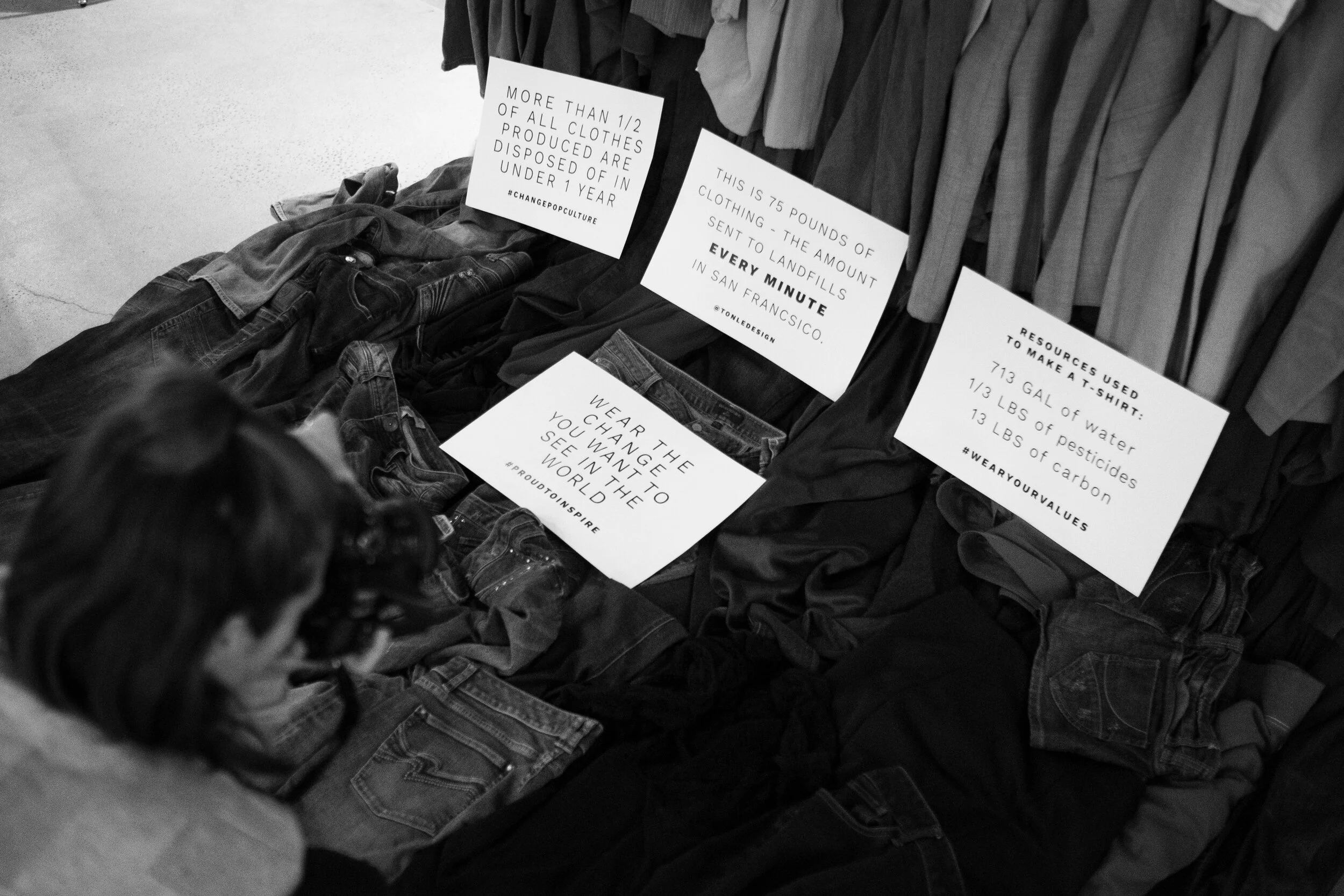The Crazy (Dirty) Facts about Fashion
Did you know that (fast) fashion is one of the dirtiest industries in the world, right up there with Big Old Oil? That fashion industry uses toxic materials and dyes, exploits women and children, pollutes our waters, and is designed so poorly that it’s expected to fall apart after only a few wears? And once the super short life cycle is over, where do those clothes end up? In our landfills, further polluting our groundwaters and life on our planet.
In China, the largest supplier of apparel to the US, 70% of the waterways are contaminated by wastewater from the textile and dye industry. Meanwhile, in tanneries in Kanpur, the leather capital of India, 400 tanneries dump toxic chromium into the water supply and it’s ending up in food.
A toxic mix of chemicals
This top is sustainably made with natural and toxci-free materials from Vyayama, photo by Zoe Larkin.
Believe it or not but the clothes you wear most likely also arent’t good for you. Chemical cocktails, hormone disruptors, and heavy metals lurk in the fibers of fast fashion clothing only to be absorbed by the pores on our bodies largest organ—our skin! Despite all the fancy health products available on the market today, our incredible bodies naturally discharge up to 1 pound of toxins per day. When we wear fabrics like nylon, polyester, acrylic, and acetate (that are made from crude oil) it restricts that release leading to headaches, nausea, skin rashes, respiratory problems, and endocrine imbalance.
Much like wrapping yourself in plastic, petrochemical fibers don’t allow your body to breathe. Azo dyes and synthetic indigo (think of those $40 blue jeans), most commonly used to color cheap clothing, are known to contain formaldehyde and release aromatic amines — of which both have been linked to cancer. (Source: Remake)
Even microparticles from our nylon, acrylic, and polyester clothing subsequently end up in the oceans and 83% of our drinking water after each wash cycle.
At our Role Models event in San Francisco, 2019
Some crazy facts
IT TAKES 713 GALLONS OF WATER, 1/3 LBS OF PESTICIDES, AND 13 LBS OF CARBON TO MAKE ONE T-SHIRT
SINCE THE YEAR 2000, THE AMOUNT OF CLOTHING PRODUCED WORLDWIDE HAS DOUBLED
MORE THAN 1/2 OF ALL CLOTHES PRODUCES ARE DISPOSED OF IN UNDER 1 YEAR
EVERY YEAR ABOUT HALF A MILLION TONNES OF PLASTIC MICROFIBERS LEAK INTO OUR OCEAN FROM WASHING SYNTHETICS - THE EQUIVALENT TO 50 MILLION PLASTIC BOTTLES
How to do better
SO, now that we know that fast fashion is a dirty bastard, should we all just stop wearing clothes? Well, luckily there are many ways that we can live as empowered, conscious fashionistas and all we have to do is slip some mindfulness and education into our wallets (and closets).
Here are some tips on how you can get started:
Stay away from polyester and nylon, it's made from oil!
Synthetic materials like these are NOT good for the planet or for your health.
Anything synthetic sheds micro-plastics, tiny plastic particles that end up in our waters when you wash them, or in your pores when you sweat.
The average use of a Fast fashion item is 5 times by wearing clothing 50 times instead of the average 5, you reduce carbon emissions by 400% per item, per year, not to mention the waste you're saving in materials and toxic chemicals in our rivers
Buy things you LOVE that you will use over and over again. Find YOUR fashion
If things break, mend them. Mending is cool.
Swap clothes with friends or buy second hand.
Look for natural materials like hemp, organic cotton, Tencel, linen, and silk.
Cold wash your clothes and hang dry them to save energy. Try to wash synthetic clothes as little as possible and invest in a Guppy Bag or Cora Ball to help remove microplastics.
Read this article with 10 tips for sustainable fashion
Podcast Tip
For more inspiration on this topic, make sure you tune into our interview with Ayesha Barenblat, the founder of Remake!





